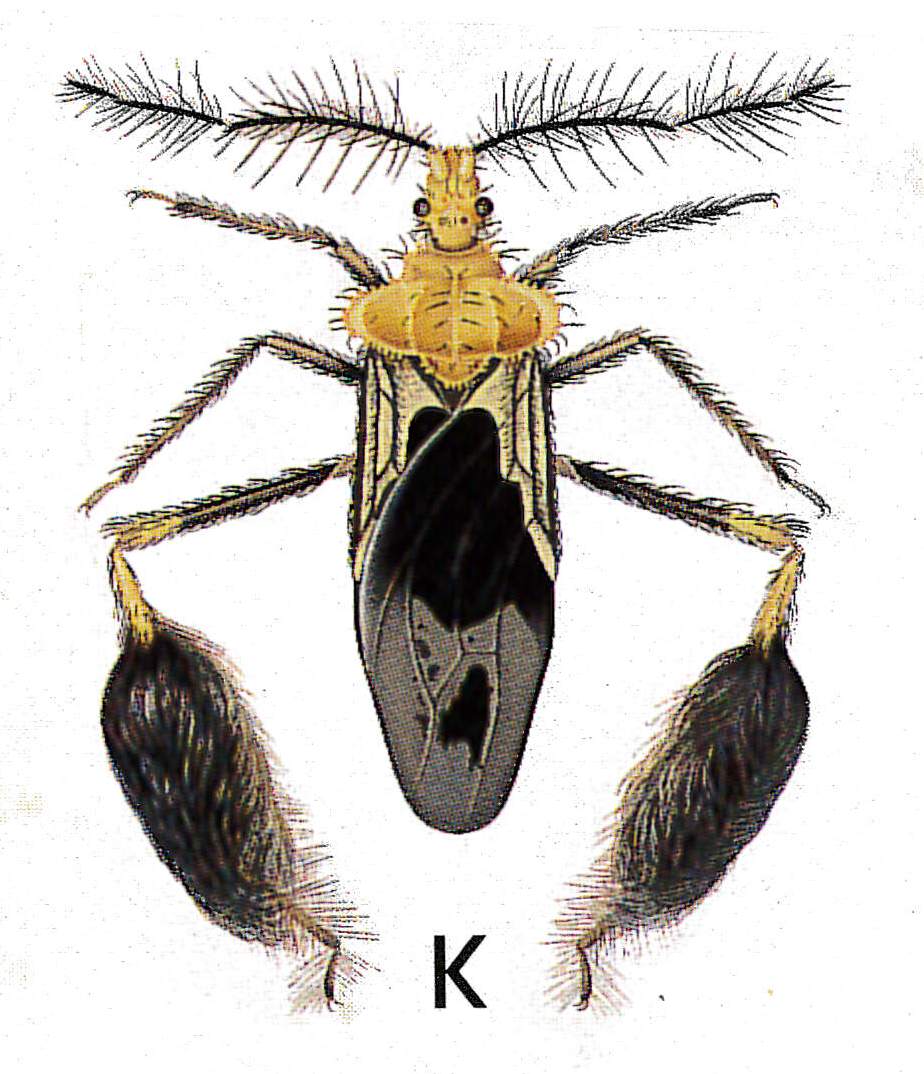
Feather-legged Assassin Bug, Ptilocnemus lemur. Painting by Frank Nanninga, from The Insects of Australia, 2nd ed., 1991.
By Kim Pullen – Australian National Insect Collection
Ants are everywhere, as most householders and picnickers know all too well. So it is not surprising that in the Australian bush environment many ant predators, large and small, have evolved to take advantage of their abundance. The Echidna’s alternative name – Spiny Ant-eater – leaves no doubt about its diet, and many desert lizards subsist largely on ants.
There is a very cool video of the Feather-legged Assassin Bug in action HERE
One of the most surprising ant predators is another insect. The Feather-legged Assassin Bug doesn’t need to go actively hunting for ants – it lures them into range then stabs them. A slow-moving yellow and black creature, covered in stiff black bristles but with a dense tuft of finer hairs on each back leg, this bug has a gland under the thorax producing a scent that ants find irresistibly attractive.
On arriving near the source of the scent, the ant will sometimes clamber all over the bug as if it were a piece of rubbish, seemingly not recognising it as another insect; if it did, the bug would probably be attacked. The bug then lifts its body to expose the gland, and the ant moves in to feed on the secretion. A fatal mistake! The assassin bug sinks its sword-like beak into the soft tissue behind the ant’s head, injects a toxin and in a matter of seconds it’s all over for the ant. The carcass of the ant is discarded a short time later, its body sucked dry.


13th July 2012 at 12:14 pm
That’s a great video. Thanks Huw
13th July 2012 at 2:36 pm
No worries – it is certainly very efficient.